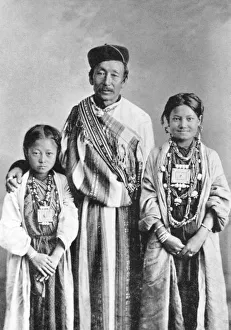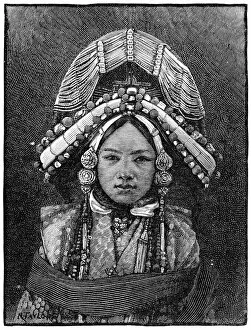Sikkimese Collection
Sikkim: A Himalayan Jewel of Diverse Cultures and Histories Amidst the majestic Himalayas, Sikkim, a tiny state in India, has a rich tapestry of history and culture
All Professionally Made to Order for Quick Shipping
Sikkim: A Himalayan Jewel of Diverse Cultures and Histories Amidst the majestic Himalayas, Sikkim, a tiny state in India, has a rich tapestry of history and culture. In the early 20th century, the 13th Dalai Lama visited Sikkim, strengthening its spiritual ties with Tibet. Sir Charles Bell, a British surgeon and explorer, documented the region's people and monasteries, capturing the essence of Sikkim in black and white. Two lamas in ceremonial dress, 1902, reflect the spiritual heart of Sikkim. Sikkim's diverse population is evident in the portraits men, a Bhutia woman, and a Nepali girl, each representing unique ethnicities. The political landscape shifted in 1910 when Maharaj Kumar Sidkeong Trul-ku became the Chogyal, or ruler, of Sikkim. The 15th Ludhiana Sikhs, an Indian army regiment, were stationed in Sikkim, showcasing its strategic importance. Lamist priests in robes, Talung monastery, 1922, underscore the significance of Buddhism in Sikkim. The Ranee of Sikkim, a powerful queen, ruled alongside the Chogyal. Through the lens of time, Sikkim's history unfolds, revealing a land of resilient people, sacred monasteries, and vibrant culture.









